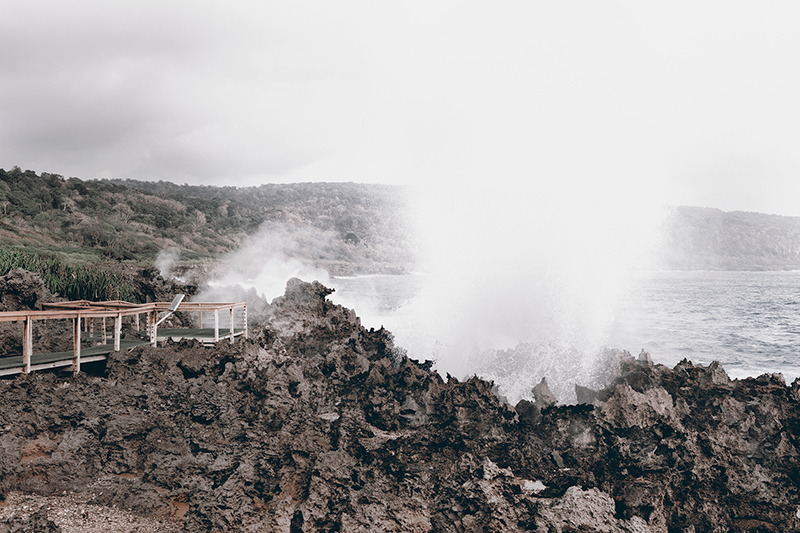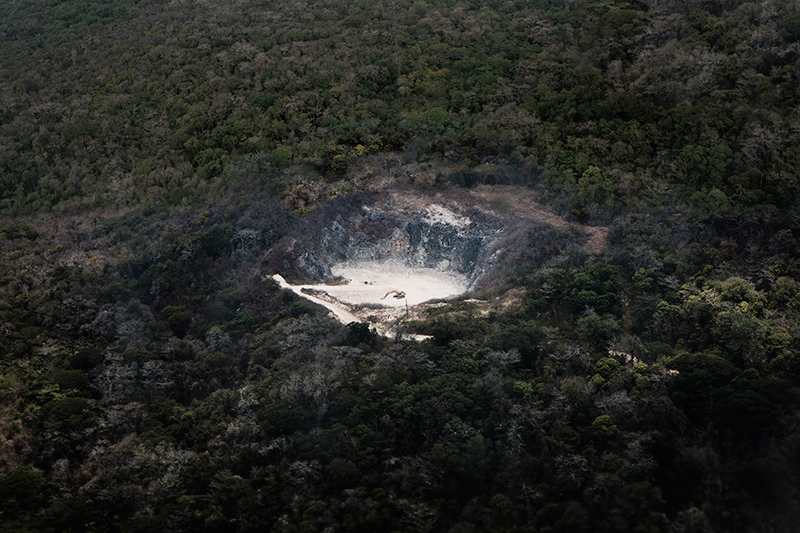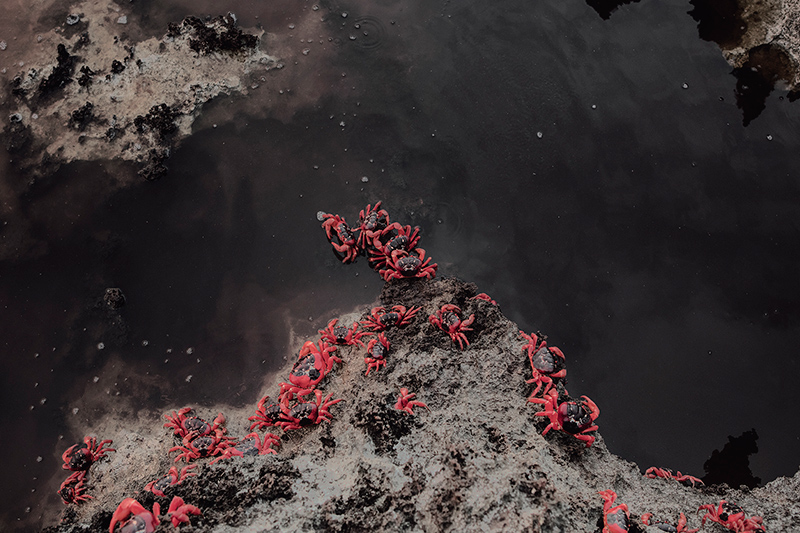ABOUT
CHRISTMAS ISLAND, NATURALLY
With photographs from the archives of The Institute of Critical Zoologists
An experiment in natural history investigation

Discovered on Christmas Day in 1643, Christmas Island is an
external territory of Australia located in the Indian Ocean.
The first settlers arrived on the island in 1887 and with the
advent of the phosphorus mining industry, the population grew
to 2,072 residents around 2001. Christmas Island’s communities
inhabited a number of “settlement areas” on the northern tip of
the island. The majority of the population were ethnic Chinese
and Malays who originated from the then British Malaya.
On May 14, 1958, the United Kingdom’s Christmas Island Act
was given royal assent, enabling Britain to transfer the
administration of Christmas Island from Singapore to Australia
by an order-in-council. This was followed by Australia’s
Christmas Island Act, which was passed in September 1958,
effectively placing the island under the jurisdiction of the
Commonwealth of Australia on 1 October the same year.
The nearly 150 years of human settlement have introduced a
number of invasive species onto the island. Not only do these
newcomers threaten some of the island’s most imperiled species,
such as the Abbott’s Booby and Christmas Island Gecko, they
have also caused the extinction of other species.
Christmas Island’s ecology is considered to be unique due
to its endemic flora and fauna and the presence of large
populations of land crabs and seabirds, which are the most
noticeable fauna on the island. The annual breeding migration
of the red crabs is also a well-known event. Researchers
estimate that 40 million crabs live on the island now, and the
number could have been twice that before invasive yellow crazy
ants became a problem.
As a result of its unique biodiversity, exceptional endemism
and the myriad of threats faced by invasive species, Christmas
Island is a high-value conservation area currently gazetted as
a strict nature reserve. In recognition of the island’s fragile
ecosystems, the 3rd Christmas Island Conservation Plan called
for the resettlement of human communities, which eventually
led to a relocation of these communities to the Australian
mainland. At present, a permit is needed for researchers
intending to study biodiversity on the island, and the island
remains indefnitely out of bounds to commercial tourism.


 Coral reef exposed at low tide
Coral reef exposed at low tide

It has not hitherto been possible to watch carefully the immediate effects produced by the immigration of civilised man - and the animals and plants which follow in his wake - upon the physical conditions and upon the indigenous fauna and flora of an isolated oceanic island. I hope to arrange that this shall be done in the case of Christmas Island, at the same time that further explorations are undertaken…
M. John, Challenger Lodge, Edinburgh, 1900

Following a recent research expedition to the Christmas Island Natural Reserve, an ecologist asked us to assess the impact of
the 3rd Christmas Island Conservation Plan on populations
of endemic animals. We replied that, although a quantitative assessment is dif cult and more research is needed to understand this phenomenon, the net ecological impact has been positive. After a long pause, the perplexed ecologist asked how it could
be possible that a landscape invaded by exotics could produce positive ecological consequences. The answer was simple— humans have evacuated the island.
T. Satoshi, ‘Restoration and rewilding nature: freeing ecosystems from humans’, Unpublished
Copyright 2015, Institute of Critical Zoologists and The Land Archive